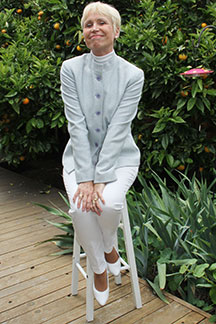To this day, two men claim to have asked the crucial question that led to the opening of the Berlin Wall: Peter Brinkmann and Riccardo Ehrman. Brinkmann represented the German tabloid, Bild Zeitung; Ehrman worked for the Italian news agency ANSA. In 2008, German President Horst Koehler awarded Ehrman the Federal Cross of Merit for having asked the question that tore down the Iron Curtain. But was it really Ehrman? Brinkmann says he asked the decisive question.
What happened on 9 November 1989
On that day, Guenter Schabowski, spokesman for the East German Communist Party Politburo, gave a press confererence in East Berlin. It covered many agenda items. The last was the East German travel law. The room was jam-packed with journalists representing domestic and International news services. Television covered the event. Schabowski was supposed to announce a temporary bureaucratic procedure that would make it easier for East Germans to travel abroad. In the face of mass demonstrations, the East German government was trying to appease its people with the new law.
An hour after the press conference had started journalists were given the opportunity to ask questions about the new travel law. Of course, they wanted to know when the law would go into effect and whether it would cover West Berlin. Schabowski looked through his notes and hesitantly replied, “Unverzueglich (Immediately).” http://www.walled-in-berlin.com/j-elke-ertle/schabowski-sparks-fall-of-berlin-wall/
Schabowski’s answer spread like wildfire among the populace. The law was not supposed to become effective until the following morning – November 10 – to give border guards, police and security time to set up a system. But Schabowski hadn’t caught that. Within minutes of hearing the news that the new travel law was effective immediately, people raced to the border crossings. But the guards had no orders to let them cross to West Berlin. Soon, thousands had amassed at the Bornholmer Strasse crossing, the most popular checkpoint, ready to visit West Berlin. http://www.walled-in-berlin.com/j-elke-ertle/boesebruecke-a-bridge-with-history/ Unable to get hold of their superiors, the guards surrendered to the pressure from the crowd. Bornholmer was the first border checkpoint to open. The others followed. Unintentionally, the wall opened up for good.
So who asked the crucial question?
Ehrmann says it was he who brought up the subject of travel restrictions, and it was he who followed up by asking the crucial question as to when the new rule would become effective. Brinkmann agrees that Ehrman brought up the subject of the new travel law but insists that he, Brinkmann, asked the defining question. Who is right? According to Guenter Schabowski the crucial question came from Peter Brinkmann. As he puts it, “It’s like playing football. The one – here Riccardo Ehrman – shooting the ball from the side of the penalty area, and the other – Peter Brinkmann – then shooting the ball into the goal.” http://www.euractiv.de/wahlen-und-macht/artikel/die-mythen-des-riccardo-ehrmann-002269 To watch an excerpt from the press conference, click https://www.youtube.com/watch?v=b8GzptqhT68/
Summing it up
On 13 August 1961 the Berlin Wall was raised to stabilize East Germany. On November 9, the unintentional demolition of the wall was meant to save East Germany. In the end, it was a communication error that tore the Iron Curtain apart. There is no doubt that the question, “as of when?” changed the course of history. But only one man asked it. Was it Brinkmann or was it Ehrman?
For a sneak peek at the first 20+ pages of my memoir, Walled-In: A West Berlin Girl’s Journey to Freedom, click “Download a free excerpt” on my home page and feel free to follow my blog about anything German: historic and current events, people, places and food.
Walled-In is my story of growing up in Berlin during the Cold War. Juxtaposing the events that engulfed Berlin during the Berlin Blockade, the Berlin Airlift, the Berlin Wall and Kennedy’s Berlin visit with the struggle against my equally insurmountable parental walls, Walled-In is about freedom vs. conformity, conflict vs. harmony, domination vs. submission, loyalty vs. betrayal.










